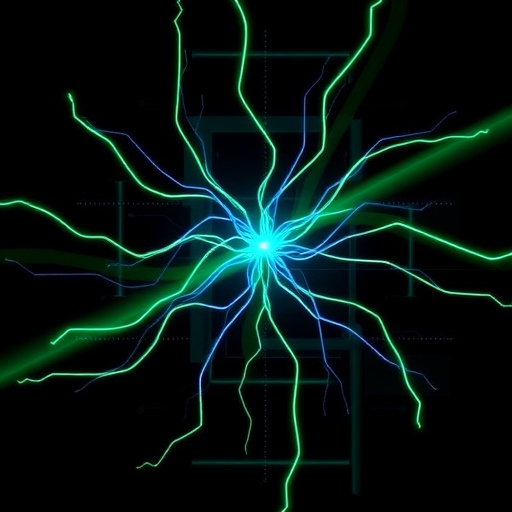The realm of artificial intelligence (AI) is on the cusp of a revolutionary breakthrough, particularly within the domain of photonic neural networks. As the demand for swift and energy-efficient computing intensifies, researchers are exploring innovative approaches to enhance the speed and efficiency of AI systems. One such approach is the development of complete photonic integrated neurons (PINs), which are poised to redefine the standards for all-optical computing. With the ability to execute ultrafast operations and complex nonlinear functions, these advanced neurons could not only address existing technical limitations but also fuel the next generation of machine intelligence.
Photonic neural networks capitalize on the unique properties of light to process information, setting them apart from conventional electronic systems. By harnessing the extraordinary capabilities of photons, researchers aim to achieve blazingly fast data transmission and computation while minimizing energy consumption. However, despite the promising potential, the realization of fully functional all-optical neurons remains a formidable challenge. The recent unveiling of the complete photonic integrated neuron marks a significant milestone and opens avenues for expansive research and application.
The innovative design of the PIN utilizes the Kerr effect to facilitate nonlinear computations at unprecedented speeds. This phenomenon, which allows for rapid changes in refractive index in response to light intensity, is a cornerstone of achieving high-order temporal convolution necessary for effective convolutional operations within neural networks. By interleaving the spatiotemporal dimensions of photons, researchers can achieve a neuromorphic architecture that not only mimics biological processes but also enhances computational efficiency.
Monolithic integration on a silicon-nitride photonic chip also heralds a new era in compact and efficient photonic systems. This incorporation of multiple functionalities within a single chip enables scalable solutions for complex tasks, thereby increasing the versatility and utility of photonic neural networks. The PIN showcases remarkable performance not only through its architecture but also through the efficacy of all-optical nonlinear activation, a critical aspect in achieving neuron completeness.
The implications of developing a complete photonic integrated neuron extend beyond technical specifications. The successful application of the PIN in high-accuracy image classification and human motion generation indicates its potential across various fields, including robotics, medical imaging, and real-time data analysis. The real-world applications of this technology promise to bridge the gap between the biological and artificial cognitive processes, resulting in smarter machines capable of learning and adapting in real-time environments.
Latency, a critical measure of performance in computing, is significantly reduced in this system, with values plummeting to as low as 240 picoseconds. Such speed is transformative for applications requiring real-time processing, such as autonomous driving, interactive gaming, and advanced surveillance systems. The subnanosecond performance establishes the PIN as a frontrunner in the quest for faster AI solutions, encouraging further investigations into its practical deployments.
Moreover, the scalability of the PIN technology will facilitate broader adoption in diverse sectors. The integration of these neurons within larger photonic networks could catalyze highly efficient systems capable of handling vast amounts of data with minimal energy expenditure. As the need for speed and efficiency grows, incorporating PINs into existing architectures might become a necessity rather than an option.
The potential of photonic integrated neurons invites exploration into their use within hybrid systems that combine electronic and photonic components. This hybridization could leverage the advantages of both mediums, maximizing computational speed and efficiency. As researchers delve deeper into this fascinating intersection of physics and technology, they may uncover new methodologies to enhance the performance and capabilities of AI systems further.
In summary, the advent of complete photonic integrated neurons represents a substantial leap forward in the field of nonlinear all-optical computing. By harnessing the Kerr effect, this innovative architecture not only achieves neuron completeness but also showcases exceptional performance capabilities. The implications for high-accuracy image classification and human motion generation mark a significant stride toward realizing the potential of AI systems that can operate at unprecedented speeds with minimal energy consumption, fundamentally changing the landscape of machine intelligence.
The path forward is poised for further exploration into the scalability of these photonic systems and their integration into more extensive computational frameworks. With the capability to accelerate AI inference processes and perform complex computations, photonic integrated neurons promise to be at the forefront of the upcoming AI revolution. The future is bright, as researchers continue to push the boundaries of what is possible, redefining the capabilities of intelligent machines in a world increasingly governed by fast-paced technology.
As the field continues to progress, the focus will undoubtedly remain on enhancing the capabilities of photonic neurons. Researchers must address the technical challenges that accompany the advancement of this technology while ensuring that it remains accessible for mass adoption. By resolving these issues and fostering collaboration across disciplines, a richer tapestry of innovative applications may emerge, fundamentally altering how we perceive and interact with intelligent systems.
The prospect of integrating complete photonic integrated neurons into mainstream technology heralds significant advancements not only in artificial intelligence but also across various disciplines. Looking ahead, the research community is undoubtedly excited about the possibilities that lie ahead, igniting imaginations as to how light-powered technologies can upend traditional computational paradigms.
In conclusion, the pioneering work on complete photonic integrated neurons offers a glimpse into a future where the boundaries of machine intelligence and optical computing blur. By enabling rapid, energy-efficient processing capabilities that adhere to the evolving demands of contemporary applications, this innovative technology is set to define next-generation AI systems. As research and exploration continue, the world watches in anticipation of the coming transformations that will expand our horizons in both technology and cognitive advancements.
Subject of Research: Photonic Integrated Neurons
Article Title: A complete photonic integrated neuron for nonlinear all-optical computing
Article References:
Yan, T., Guo, Y., Zhou, T. et al. A complete photonic integrated neuron for nonlinear all-optical computing. Nat Comput Sci (2025). https://doi.org/10.1038/s43588-025-00866-x
Image Credits: AI Generated
DOI: 10.1038/s43588-025-00866-x
Keywords: Photonic Neural Networks, All-Optical Computing, Kerr Effect, Image Classification, Machine Intelligence, Ultrafast Processing, Photonic Integrated Neurons, Nonlinear Activation, Silicon-Nitride Photonics, Energy Efficiency, Subnanosecond Latency.




